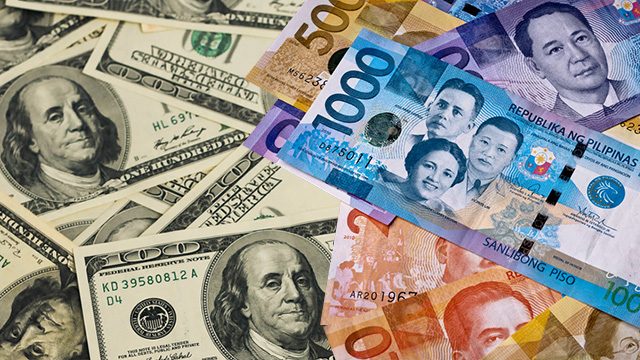SUMMARY
This is AI generated summarization, which may have errors. For context, always refer to the full article.

MANILA, Philippines – The Bank of the Philippine Islands (BPI) expects the peso to slide to P50 to the dollar due to higher infrastructure spending and the US Federal Reserve raising interest rates.
In the bank’s latest commentary, BPI lead economist Emilio Neri Jr said the Philippine peso is more likely to hit P50 rather than P45 to $1 through to 2017.
The peso has appreciated in recent weeks due to the US Fed’s decision not to raise rates. The peso closed at P46.44 to the dollar last Friday, June 17.
The US Fed, however, hinted that there could be two rate hikes coming this year.
Neri pointed out that the rising price of crude oil, US inflation, and stronger US employment data make at least one rate hike likely.
“Despite recent appreciation pressure, the peso is expected to revert toward the P50 handle as the Fed raises rates within the year with more follow through actions in 2017 despite market expectations for the opposite,” he said.
Neri added emerging markets that are non-oil exporters such as the Philippines are likely to weaken, especially if oil exceeds the $60 per barrel mark.
Infrastructure spending
Another factor that could weaken the peso is the incoming Duterte administration’s plan to increase spending.
The incoming administration has committed to raise infrastructure spending to 7% of GDP, Neri said, explaining that about $145 billion would be needed to fund higher infrastructure spending assuming that 3/4 of the amount are from imported construction equipment and materials.
The Duterte administration also plans to raise deficit spending, or spending using borrowed money, to 3% of GDP from the current 2%.
“There will be increased demand for US dollar by the next administration for infrastructure spending and will likely have preference for domestic borrowing to fund the deficit,” Neri said.
But the economist noted that foreign remittances, a crucial channel for foreign exchange flows, would continue to grow at a steady pace, though not as sharply as before.
He added that the red-hot BPO sector would also help provide dollar liquidity, but “these flows will not adequately compensate for the widening trade deficit caused by the aggressive importation of capital goods for the Duterte infrastructure buildup.” – Rappler.com
Add a comment
How does this make you feel?
There are no comments yet. Add your comment to start the conversation.